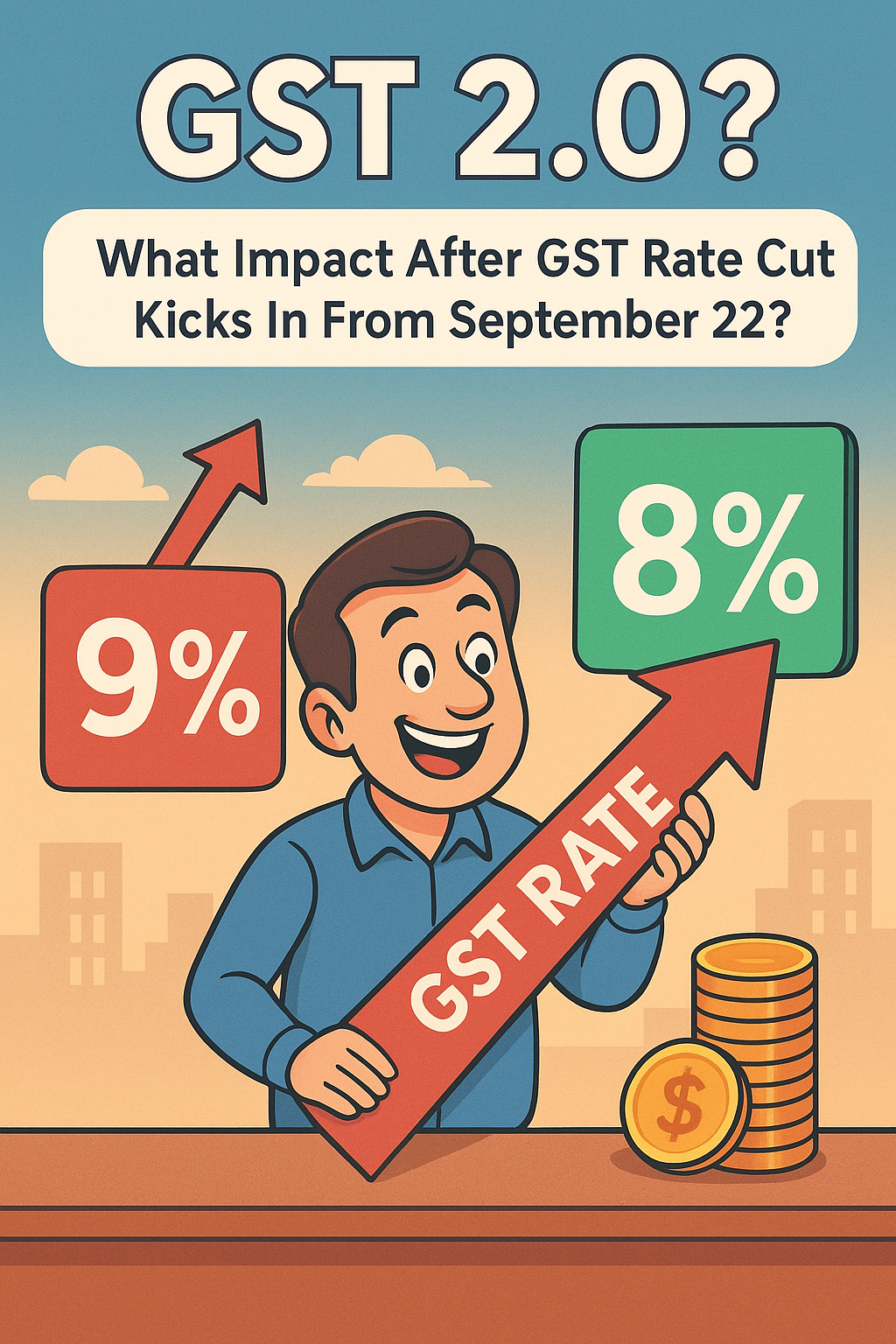The Indian government has taken a significant step toward easing the cost burden on consumers and boosting demand by implementing a broad-based Goods and Services Tax (GST) rate cut effective from September 22, 2025. Announced as part of the GST 2.0 reform package, this rate rationalization marks a major shift in India’s indirect tax structure — just in time for the festive season.
With this reform, everyday items and services are set to become more affordable for the common man. Here’s a breakdown of what this means for consumers, businesses, and the overall economy.
Table of Contents
A Simpler GST Structure After GST 2.0
One of the biggest highlights of GST 2.0 is the move to simplify the tax rate structure. Earlier, GST had four primary slabs — 5%, 12%, 18%, and 28%. These have now been rationalized into mainly two standard rates:
- 5% for essentials and basic services
- 18% for most goods and services
Additionally, a new 40% slab has been introduced for luxury and sin goods, such as cigarettes, paan masala, and premium vehicles.
This structural change reduces confusion, simplifies compliance for businesses, and brings greater transparency in pricing for consumers.
What Gets Cheaper After GST 2.0?
From September 22 onwards, consumers will see noticeable price drops in several key categories. Here’s a look at what’s now cheaper:
Essential Food Items
- Ghee, butter, paneer, dry fruits
- Namkeen, ketchup, jam, ice creams
- Coffee and processed foods
These items, previously taxed at 12% or 18%, are now moved to the 5% slab, offering immediate savings to households.
Personal Care Products
- Shampoos, soaps, face wash
- Toothpaste, toothbrushes, shaving cream
These are now taxed at a lower rate, making daily hygiene products more affordable, especially for middle-class families.
Consumer Durables and Electronics
- Televisions, air conditioners, refrigerators
- Washing machines, vacuum cleaners
GST on many appliances has been cut from 28% to 18%, making them more accessible for aspirational buyers during the festive shopping period.
Salon and Wellness Services
- Beauty salons, spas, gyms, yoga classes
These services are now taxed at 5% (without input tax credit), instead of the earlier 18%, reducing prices for self-care and wellness activities.
What’s Unchanged or Costlier
While most essential and mid-range goods have seen tax cuts, a few categories remain unchanged or see higher rates:
Luxury and Sin Goods
- Cigarettes, tobacco products
- Paan masala, high-end vehicles
- Certain luxury watches and alcoholic beverages
These now attract 40% GST plus cess, in line with the government’s aim to discourage consumption of harmful or non-essential items.
Some Industrial Inputs
A few raw materials and inputs used in industries may remain under higher GST slabs, though reforms for input credit systems are also underway.
Why This Matters
The timing of this rate cut is strategic. With the festive season — including Navratri, Dussehra, and Diwali — approaching, consumer spending typically spikes. By lowering prices on commonly used goods and services, the government aims to:
- Boost demand and consumption
- Improve business sentiments
- Support MSMEs and retail sectors
- Reduce inflationary pressure
These measures are also expected to stimulate economic growth by encouraging spending and improving the cash flow of businesses, particularly in retail, FMCG, and hospitality sectors.
Impact on Businesses
While consumers enjoy reduced prices, businesses also benefit from:
- Simplified compliance due to fewer tax slabs
- Lower working capital blockage, thanks to faster refunds under GST 2.0
- Improved pricing competitiveness, especially for domestic manufacturers and exporters
However, businesses will need to update billing systems and inventory pricing to reflect new tax rates. Some smaller retailers may also require support in adapting to new e-invoicing and input tax credit systems introduced in GST 2.0.
What Should You Do?
As a consumer, you can expect lower prices on a range of everyday goods and services starting September 22. It’s a good time to:
- Shop for appliances or electronics
- Stock up on personal care items
- Plan festive shopping to take advantage of price drops
As a business owner, ensure your billing systems and GST filings reflect the new rates and slabs. Keep an eye out for updates on input credit rules and compliance requirements under GST 2.0.
Conclusion
The GST rate cut coming into effect from September 22, 2025, marks a positive shift for both consumers and businesses. It simplifies India’s tax regime while offering financial relief to millions of households. As festive buying kicks off, this move is expected to bring more cheer — and more savings — to the Indian market.
With the new rates in place, India takes a bold step toward a more transparent, growth-friendly taxation system that balances affordability for consumers with clarity for businesses.
Contact Taxgiveindia.com for professional services related to tax.
